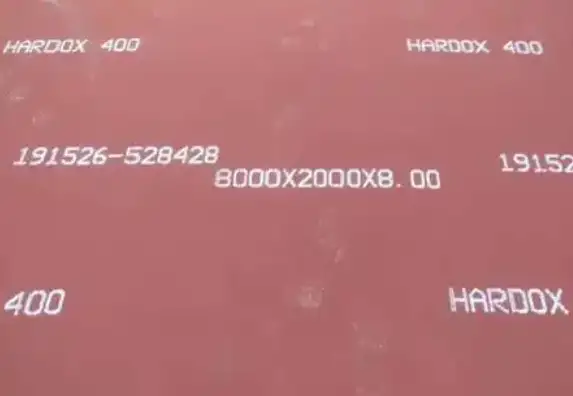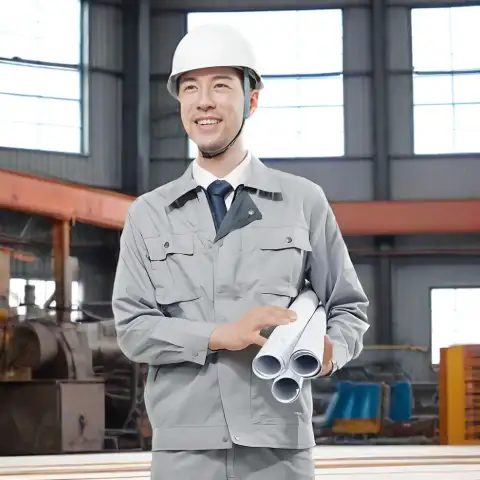The comparison between Hardox 400 and Hardox 500 steel revolves around their hardness, toughness, and applications in industries that demand exceptional wear resistance. Both steels are part of the Hardox brand, produced by SSAB, a well-established name in the production of high-strength steels. The fundamental difference between Hardox 400 and Hardox 500 lies in their hardness levels, which in turn influences their strength, abrasion resistance, and overall performance in various industrial applications. Hardox 400 has a Brinell hardness of approximately 400 HBW, while Hardox 500 is harder at 500 HBW. The higher hardness of Hardox 500 makes it suitable for more demanding applications, while Hardox 400 provides excellent toughness and formability at a lower hardness. Both steels offer unique benefits and are chosen based on specific needs in industries like mining, construction, and transportation.
What is Hardox 400 and Hardox 500?
Hardox 400 and Hardox 500 are part of the family of abrasion-resistant (AR) steels produced by SSAB. These steels are designed to perform in high-wear environments where resistance to abrasion is critical. Hardox 400 offers high toughness and is typically used in applications requiring both high strength and moderate abrasion resistance. In contrast, Hardox 500 offers enhanced hardness and abrasion resistance, making it ideal for more severe conditions where the material faces high impact and wear.
Hardox 400 is commonly used in construction equipment, truck bodies, and mining tools, while Hardox 500 is more suitable for applications such as crushers, hoppers, and wear parts that experience heavier and more abrasive loads.
Chemical Composition of Hardox 400 vs. Hardox 500
The chemical composition of Hardox steels plays a crucial role in determining their mechanical properties and performance characteristics. Both Hardox 400 and Hardox 500 are alloyed with carbon, manganese, and other elements to achieve their specific hardness levels.
| Element | Hardox 400 (%) | Hardox 500 (%) |
|---|---|---|
| Carbon (C) | 0.18-0.24 | 0.22-0.28 |
| Manganese (Mn) | 0.90-1.50 | 0.80-1.60 |
| Silicon (Si) | 0.20-0.50 | 0.20-0.50 |
| Chromium (Cr) | 0.30-0.60 | 0.30-0.60 |
| Nickel (Ni) | 0.40-0.80 | 0.40-0.80 |
| Phosphorus (P) | ≤0.025 | ≤0.025 |
| Sulfur (S) | ≤0.01 | ≤0.01 |
Both steels have a similar alloying composition, but the difference lies in the carbon content, which influences the hardness and the steel’s ability to withstand abrasion.

Hardox 400 vs Hardox 500: Properties Comparison
Below is a detailed comparison of the key properties of Hardox 400 and Hardox 500, which are central to their performance in various applications.
| Property | Hardox 400 | Hardox 500 |
|---|---|---|
| Brinell Hardness (HBW) | 400 | 500 |
| Yield Strength (MPa) | ≥ 1100 | ≥ 1300 |
| Tensile Strength (MPa) | ≥ 1300 | ≥ 1450 |
| Elongation (%) | ≥ 14 | ≥ 12 |
| Impact Energy (J) | ≥ 27 at -40°C | ≥ 20 at -40°C |
| Thickness (mm) | 3-130 | 3-80 |
| Density (kg/m³) | 7850 | 7850 |
Hardox 500 offers higher strength and wear resistance, particularly in extreme environments, while Hardox 400 strikes a balance between strength, toughness, and workability. Hardox 500’s slightly lower elongation and impact energy reflect its higher hardness.

Key Applications of Hardox 400 and Hardox 500
Hardox 400 is often used in environments where toughness, formability, and moderate wear resistance are needed. Key applications include:
-
Mining equipment (such as shovel buckets and excavator arms).
-
Truck beds and bodies (especially for transportation of gravel and sand).
-
Agricultural equipment (e.g., plow blades and augers).
Hardox 500, on the other hand, is preferred in applications requiring extreme abrasion resistance and impact toughness. Common uses include:
-
Wear plates for crushers, hoppers, and chutes.
-
Dump truck liners and truck bodies used in severe mining and construction applications.
-
Heavy-duty excavator arms and buckets.
Lifetime and Wear Resistance
Both Hardox 400 and Hardox 500 are known for their long service life in abrasive conditions. However, Hardox 500, with its higher hardness, provides superior wear resistance in high-impact and high-wear applications. While Hardox 400 offers good wear resistance and longevity, Hardox 500 is better suited for environments where equipment is exposed to higher stresses and more abrasive materials.
Hardox 400 Steel Equivalent Materials
Hardox 400 is widely used around the world and has several equivalent materials across various international standards. Some of the common equivalents for Hardox 400 include:
-
RAEX 400 (Europe)
-
Bisalloy 400 (Australia)
-
Tensalloy 400 (USA)
Hardox 500 Equivalent Materials
Hardox 500, due to its specialized properties, also has several equivalents. Common equivalents for Hardox 500 include:
-
RAEX 500 (Europe)
-
Bisalloy 500 (Australia)
-
Tensalloy 500 (USA)
These equivalents can be selected depending on the region and the specific requirements of the application.
Hardox 400 vs. Hardox 500: Size and Weight Comparison
When selecting between Hardox 400 and Hardox 500, it is essential to consider the size and weight limitations of each material. Hardox 400 is available in a broader range of thicknesses, from 3mm to 130mm, while Hardox 500 typically ranges from 3mm to 80mm. The differences in thickness can affect the weight and overall suitability for specific applications.
| Thickness Range (mm) | Hardox 400 | Hardox 500 |
|---|---|---|
| 3-6 | Yes | Yes |
| 6-20 | Yes | Yes |
| 20-50 | Yes | Yes |
| 50-130 | Yes | No |
Global Pricing Comparison for Hardox 400 and Hardox 500 (2025)
The price of Hardox 400 and Hardox 500 varies across global markets, influenced by factors such as local availability, production costs, and demand. Below is a pricing comparison for 2025 based on current market trends:
| Region | Hardox 400 (USD/ton) | Hardox 500 (USD/ton) |
|---|---|---|
| USA | 950-1150 | 1050-1300 |
| Europe | 920-1100 | 1020-1250 |
| China | 850-1000 | 1000-1200 |
MWalloys, as a direct supplier from China, can offer competitive pricing and tailor orders to meet your specific requirements for both Hardox 400 and Hardox 500.
Frequently Asked Questions (FAQs)
-
What is the difference between Hardox 400 and Hardox 500?
Hardox 400 has a Brinell hardness of 400 HBW, offering toughness and formability, while Hardox 500 is harder at 500 HBW, offering superior wear resistance. -
Can Hardox 400 be welded?
Yes, Hardox 400 can be welded with appropriate precautions, such as preheating and post-weld heat treatment. -
Is Hardox 500 suitable for welding?
Hardox 500 can be welded, but special care is needed to avoid cracks due to its high hardness. -
What is the maximum thickness of Hardox 500?
Hardox 500 is available in thicknesses up to 80mm. -
How long does Hardox 400 last in abrasive conditions?
Hardox 400 provides long service life, but Hardox 500 is recommended for more severe wear conditions. -
What are the most common applications for Hardox 400?
Hardox 400 is widely used in the mining, construction, and agricultural industries. -
Can Hardox 500 be used for heavy-duty truck liners?
Yes, Hardox 500 is an excellent choice for truck liners exposed to extreme wear conditions. -
What is the price difference between Hardox 400 and Hardox 500?
Hardox 500 is generally priced higher than Hardox 400 due to its higher hardness and abrasion resistance. -
How does Hardox 500 compare to other wear-resistant steels?
Hardox 500 is one of the hardest wear-resistant steels available and is suitable for extremely high-wear environments. -
Where can I buy Hardox 400 and Hardox 500?
MWalloys offers competitive pricing for both Hardox 400 and Hardox 500 with direct sales from China.

